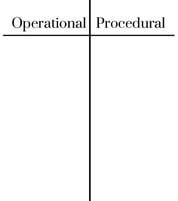Managing group dynamics is part science, part art – and a lot of attention to detail for the facilitator. “Creating space,” “encouraging engagement,” and “being accountable” are all tall orders, especially for most group leaders, who aren’t trained facilitators but have responsibility for helping the groups they work with function effectively and inclusively.
Norms are agreements established at the beginning of the group’s work together and available for reference during every interaction. They set the figurative “bar” for what the experience of the group will be, including each person’s behavioral contributions.
One of the biggest mistakes I see is the assumption of shared understanding and agreement about norms and neglecting to formally include them as the group is being launched. Without norms and the process of discussing and coming to an agreement about how each member of a group will align with and uphold them, it’s incredibly difficult to manage accountability if and when a member isn’t contributing in ways that are desired and helpful.
Establish accountability at the beginning of a process, not the end.
Don’t wait until a team member’s behaviors are problematic to introduce norms. Establish clear and shared expectations about team behaviors at the outset of the group’s work. If you are operating with an established team that does not have or needs to refresh its norms, do it now. For example, “I’d like to propose we use part of our upcoming meeting to reflect on our group’s process and practices. We can identify what is working well for us and things that we would like to do differently going into the new planning cycle. We can also revisit our norms to ensure we are all on the same page about contributions and practices.”
Types of Norms
Norms can be procedural and behavioral. Procedural norms are “DeEtta will take high-level meeting notes and distribute them to all team members within 24 hours of the meeting.” Behavioral norms reflect how group members will interact with each other, such as “don’t interrupt” or “invite and listen to alternative points of view.” The most effective group meeting norms blend procedural with behavioral practices. Most important of all is that there is a shared definition of all norms by group members. It is difficult to hold people or teams accountable for a norm that they don’t understand or agree to.
Creating Group Norms
The simplest way to create team norms is to start with flipchart paper (if you’re in person and old school, like me) or a shared virtual document. Create two columns, one for “operational” and another for “procedural.”

Invite the team to brainstorm ideas that can be posted in a shared space, then discussed, refined, and used to guide practice. You can begin with, “What are some of your ideas about group guidelines?” You should come to that conversation with some ideas of your own, but perhaps invite others to share first. If people need examples, you may supply a few to get the ball rolling. Here are some examples:
Example Group Norms
Be in the service of the group, of the organization
- Set aside individualistic/siloed thinking
Be present: be here now
- No email while meeting
- Be engaged. Listen.
Be prepared coming into the meeting
- Complete background documents, comment, and revisit information
Set agendas at the end of each meeting and pre-readings with enough advance notice to be prepared
- A designated meeting facilitator will keep meetings on track/on time
Encourage inclusion
- Invite and ensure all members’ contribution
- Share dissenting ideas/points of view in the group
Take time to explore and understand each other’s perspectives
- Respect and authentically consider alternative opinions
- Avoid making assumptions
- Listen actively; seek to understand
- Help the group learn—share my thinking; invite others to share their thinking
Learn more on how to structure meetings and group interactions that effectively unleash the creativity of your team in the Inclusive Manager’s Toolkit. This is our highly-rated signature course filled with content, resources, experiences, and solutions that reflect the pressing issues facing managers and leaders. Join us and start a journey of growth and impact in your career.


